
My Daily Ritual for Extreme Productivity
How would you like to be able to accomplish more in one day than other people accomplish in one week?
Sounds interesting, right? Then read along to learn how to boost your productivity to levels you never thought possible.
Productivity for finite humans
Before we get to the juicy part, let’s discuss what productivity is all about.
Well, human beings are finite. Our energy is limited, our attention is narrow and we only have 24 hours each day (and only a certain amount of years on this world). It is then imperative to make sure that the time and effort we put towards a specific task or goal should yield the biggest results possible.
This is where productivity comes into place.
Productivity refers to the output we produce in relation to the resources (time, labor, money etc.) we employ.
What we essentially seek, is to produce the biggest output out of our input.
Productivity as a concept is very close to efficiency, i.e. the ability to accomplish (produce) something with the least waste of time and effort.
However, efficiency does not take under account what is accomplished and what the impact of this accomplishment is. It examines only how things are done.
This is where effectiveness comes into play.
Effectiveness refers to the ability to accomplish a specific purpose, to produce the intended or expected result. It examines what things should be done.
Efficiency is doing things right. Effectiveness is doing the right things.
What we want is first to be effective, i.e. to work on the stuff that matter and accomplish the results that are important. Only then we should bother with efficiency, i.e. how to work with a minimum expenditure of time and effort.
Want to get this article as a nice PDF ebook? Download it below!
People have no idea how to work productively
When it comes to productivity, most people are clueless on how to work efficiently, and more importantly, how to work effectively. They are consumed by what productivity experts characterize “busy work” and what I like to call as “pseudo work”.
They spend hours “working” but the actual progress towards their goals or towards accomplishing a task, is only minimal. So essentially, they waste a lot of their precious time doing things that are irrelevant, or doing important things in a suboptimal way.
The reasons for this are many.
First of all, most people cannot properly determine what tasks they should be doing. They lack the strategic skills and the self-control to actually analyze what really needs to be done.
From all of the things that happen to be on your “To-Do list”, only a few are usually worth your time and effort.
How can you identify those? They are those activities that will produce actual, tangible progress towards a specific goal.
For example, if you are an aspiring blogger, “busy work” would be to mess around with your website’s styling options to “optimize its design”. Whereas actual progress would be to sit your ass down on your computer, fire up your favorite editor and actually produce some solid content that will offer value to your visitors.
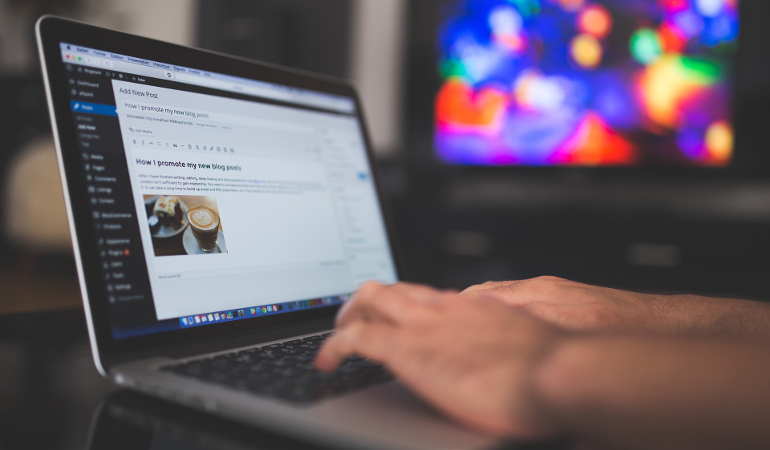
Additionally, most people do not know how to work. This might sound strange but bear with me while I explain.
Most people are not aware that the optimal way to work is to do it while being focused on a single task after you have removed all possible distractions. Rather, they attempt to multi-task or they work in an environment full of distractions.
We want to be focused on a single task and do it without distractions, because that will allow us to get into “flow”.
“In positive psychology, flow, also known as the zone, is the mental state of operation in which a person performing an activity is fully immersed in a feeling of energized focus, full involvement, and enjoyment in the process of the activity. In essence, flow is characterized by complete absorption in what one does.”
This is a state of the mind where we are operating at an optimal level. You might have already felt this in the past. It is when you are so consumed by a task, that time stops and everything around you seems to fade away. Our most productive work occurs in the “flow” state.
This should be our goal when we are working: to reach the “flow” state as soon as possible, and remain there as long as possible.
On the contrary, most people work in suboptimal ways, switching contexts constantly and being distracted by external factors that could have been avoided.
I have a lot of examples of such “pseudo-work” in action.
For instance, I have observed people “working” on their laptop while having Facebook running in the background, stopping to check their e-mail in the middle of the task and having their mobile phone next to them, checking it every couple of minutes to see if they have any notifications. Yeah, that is certainly NOT the way to work.
So what is the correct approach to productivity?
The answer is to understand how humans are “designed” (by evolution) to operate on a fundamental level and then follow a framework of how to work efficiently and effectively.
To save you time, I am going to share with you my daily ritual for extreme productivity.
It is the framework I operate within during time periods where I want to be as productive as possible, whether it is a new project launch or having to meet a specific deadline.
I have to warn you though. This framework requires a lot of self-discipline and it will take a while until you have mastered it. But I guarantee that if you follow it through, your productivity will explode and you will be able to accomplish more in a day than most people accomplish in a week (or even more).
So, let’s delve into it.
It all starts with a proper Morning Ritual
With the term “Morning Ritual” we mean a sequence of actions that we almost mechanically perform every morning as if they were part of a ritual.
Productivity starts in the morning since that is the perfect time to set the record for what is going to follow throughout the day.
Pregame
As with almost anything major and important in life, you have to perform some strategic planning before you proceed. This is where “Pregame” comes into play. In order to be able to fully leverage the suggested framework, you need to have some aspects of your lifestyle taken care of.
1. Learn how to wake up as soon as the alarm goes off
The first item in the list is to be able to wake up as soon as the alarm clock goes off. That is right, no more snoozing and lying on the bed. As soon as the alarm fires, you are up and ready to start the day.
The reasons we want this are twofold. First, you save time. If you oversleep just 30 minutes a day, it amounts to over 180 hours a year wasted. Second, your schedule remains intact and does not get pushed back by a delayed rising.
Steve Pavlina has an excellent guide on how to do that. In short, you need to train your subconscious mind that, when the alarm clock fires, you step out of the bed no matter how warm and cozy it might feel.
The correct approach here is to not try to “fight” it in the morning. No. Your willpower alone will not be enough and after all, there are other more important things to consume it for. The proper training is done in other times during the day.
The gist is this: You follow the exact same sequence you follow in the morning, but you do it during the day where your conscious has more control. After you practice that for several times, it will become a habit and will be “installed” in your subconscious mind. Perfect. Now every time the alarm fires in the morning, you automatically get out of bed.
2. Learn how to wake up early in the morning
After being able to wake up as soon as the alarm fires, the next step is to be able to wake up early in the morning. As a side bonus, you will also wake up at the same time every day. This will allow you to have a fixed schedule and operate strictly within it. Pavlina has also a guide on this.

The reason you should wake up early is that distractions are minimal at those hours. Everyone is off sleeping so it will be less possible to be interrupted. Additionally, there will be much less incoming emails and social status updates, so you will be less tempted to compulsively check them.
Everything is calmer during the early hours, thus it will be easier for you to immerse into working on your tasks.
The trick here is to go to bed when you are sleepy, and only when you are sleepy, and get up with an alarm clock at a fixed time. Note that only the wake up time is fixed. You can go to bed at different times every night.
After a few days of using this approach, your sleeping pattern will stabilize and you will be able to get the required amount of sleep. For more details, check Pavlina’s guide.
3. Learn how to sleep immediately after you go to bed
Finally, you need to be able to fall asleep right after you go to bed. This will save you a lot of time in the long run, especially if you are used to sleep and remain awake before you finally drift off.
Consider that if it takes you even 10 minutes to fall asleep each night, you will be wasting around 60 hours per year. This is some serious amount of time.
Again, Pavlina has taken care of explaining how to do that. Note that his approach seems a bit weird and might not suit you, so make sure to experiment with it
After we have our pregame in order, it is time to get into the hot stuff.
Execution of an Empowering Morning Ritual
As we mentioned, our morning ritual will consist of specific actions that will occur sequentially and are optimized towards a specific goal, to be productive as hell.
Here is how to do it.
The first 45 minutes to one hour of the day should be allocated to “strengthening yourself”. This means that you should allocate it to activities that will strengthen your mind, body and spirit.
Let’s examine a sequence of those activities right after you wake up.
– Drink 2 glasses of water: 1-2 mins
After spending all night sleeping, your body and especially your brain will be dehydrated. In that state, you cannot function at 100% of your capacity. Drink 2 glasses of water (16oz ~ 500ml) to get kick-started. As a pro tip, have the water next to your bed so that you do not forget it.
– Go to toilet, brush teeth: 10-20 mins
Straightforward, not much to explain.
– Meditation: 10-20 mins
Now things get interesting! Well, meditation is one of the best activities to add to your morning ritual. It has enormous benefits to health and productivity, all backed up by science!
Here are some of them:
- Increases immune function and decreases inflammation
- Increases your focus & attention memory
- Improves your ability to be creative & think outside the box
- Improves your ability to regulate your emotions
Those sound quite convincing to me. But if you are not sold on it yet, then learn that a big percentage of Top-Level CEOs are practicing meditation.
Meditation might sound like an abstract and esoteric thing to do, but it is really not. In essence, you sit or lie on a comfortable position, close your eyes and pay attention to your breathing.
Random thoughts will flood your conscious mind. You just “discard” them and continue to focus on your breath. You can find several videos online on how to perform meditation. Give it a try!
– Make bed, prepare clothes: 5mins
Now things get even weirder. Make your bed? Why is this important you might ask?
Making your bed will help set the tone for the rest of day. Things are getting done today and everything is taken care of.
Actually, there is also research that indicates that making your bed will make your more productive during your day.
Charles Duhigg explains in his book, “The Power of Habit”:
“Making your bed every morning is correlated with better productivity, a greater sense of well-being and stronger skills at sticking with a budget.”
Awesome!
– Quick Workout: 10 mins
Next step of the morning ritual is working out.
Physical exercise has enormous benefits to your health and well-being. It is preferable then to do it in the morning so that you are certain that you will not miss it.
On top of those, working out makes you more productive by improving your energy levels, your physical health and your mental health.
Do you want to know what Billionaire Richard Branson has to say on the matter?
Well, when asked about a tip on productivity, he gave it a thought for a few minutes and then replied:
“Work out”.
With a Net Worth of several Billions, his opinion should carry some weight.
For a workout plan, we need something quick and intensive that will not exhaust you. A High Intensity Circuit Training (HICT) like the 7-Minute Workout is perfect for this since it will allow you to work all your body parts.

– Shower: 5 mins
After finishing your workout, hit the shower. Preferably, do a cold one. It will wake you up for sure and you will also enjoy the various health benefits associated with cold showering.
You should spend only a few minutes in there, so do not waste time. Do it commando style: “Get in, get the job done, and then get out”.
– Education / Reading: 20-30 mins
At this point, you can also inject some reading into your morning routine. Self-education is imperative to your overall progress and prerequisite for your journey to wealth, so it makes sense to allocate a specific amount of time for it.
Personally, I enjoy reading so much that I do not need to include it in my morning ritual. I systematically read at other times during the day. However, it is up to you to see how this suits you. If you face difficulties concentrating and allocating time for reading, then you should definitely make it a part of your ritual.
And this concludes the “strengthening” part of the morning ritual.
Notice that we are spending an hour or more in activities that are not directly related to work. Don’t worry, this time investment will yield an enormous return later on.
Accomplishing your most important tasks
After taking care of ourselves on a primal and fundamental level, we are now ready to get into work.
Note that you have not eaten anything so far and this is on purpose. You will allow yourself to eat after you are done with the next step.
Let’s see what this is.
“First task of the day”
We will start our work with what I call the “First task of the day”. This is the single most important thing you should do that day.
How do you determine what your first task should be?
Well, it should be something that will actively bring you closer to your goals. By accomplishing it, you will be a step closer to reaching a wanted outcome.
Very often it will be something that is out of your comfort zone, so it might feel a bit overwhelming and scary. That is a good thing, it means you are expanding.
Some examples would be to write a blog post if you are a blogger. Or to deal with a ball-busting “heisenbug” that cripples your application if you are a software developer. Or to create a standardized procedure that your employees should follow if you are an online entrepreneur. Or to make some phone calls to potential customers if you are head of sales. And so on.
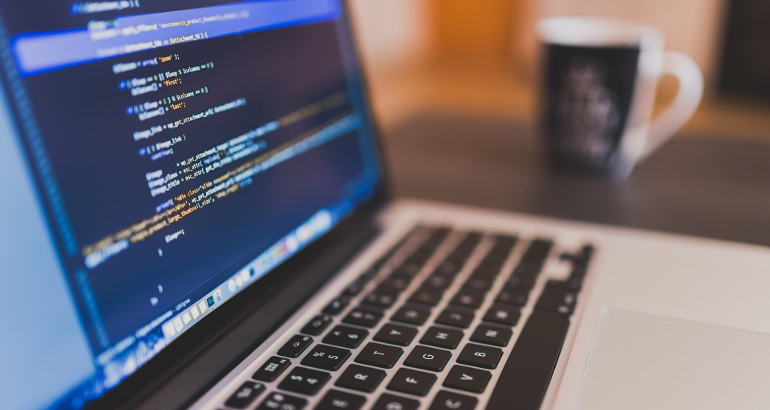
The first task of the day should be predetermined, you should not spend time to figure it out in the morning. The previous night, before you go to bed, you sit on your computer and strategically assess what is the most important thing you need to have progress with. That becomes your first task.
As a pro tip, get your computer prepared for the particular task from the night before. For example, if you need to write a blog post, fire up your text editor and leave it open so that you see it first thing in the morning. Put your computer in sleep mode and now you are ready for it when you wake up.
The secret in tackling the first task is to work within an undistracted block of time. This seems quite easy to implement, but it is a bit tricky so I will share some tips on how to do it in a section below.
So, for your first task, you allocate a specific amount of time during which you will work solely focused on that task with ideally no distractions.
For the length of the block of time, you have a couple of options.
The first is to work in “Pomodoros”. This is a popular productivity technique. It uses a timer to break down work into intervals lasting 25 minutes each, separated by short breaks (usually 5 minutes). These intervals are known as “Pomodoros”. In this case, the task should be something that lasts around 2 Pomodoros to complete.
The second approach is to work for 45 minutes and then have a break for 15 minutes. You go on with another 45 mins working block, and then have a longer break for half an hour.
There is another, less popular approach which is to work for 1 hour and 30 minutes straight. After that you have a 30 mins break. You work again for 1h30min and then have a longer break for 1h.
All approaches are pretty much similar. The optimal duration will depend on you and your own needs. Feel free to experiment with this and see what works better.
Note that after the first block of working time (after 2 Pomodoros if you follow that approach), you can allow yourself to eat something. This “postponed eating” approach has a dual benefit.
First, you force yourself to finish the first block of work. Your subconscious mind will know that unless you plow through some work, you are not going to provide it with food.
Second, it will also act as a reward for you. You have accomplished a productive task, so you are eligible for some kind of small reward. Your breakfast will be that reward.
Here are some extra thoughts on this. Prefer a breakfast based on proteins and fats to keep your glycemic index in order and avoid any blood sugar spikes and crashes. Also, you can experiment with intermittent fasting. In this case, you skip breakfast altogether and eat at your predefined feeding window.
“Second task of the day”
After breakfast, it is time for the “Second task of the day”.
This will be another task carefully planned from the day before and will also bring you a step closer to reaching your goals. It could also be a continuation of the “First task”, in case you did not have the time to complete it, or if they are both parts of a much larger task.
The second task should also be performed in the work/break pattern, as described above. Make sure you are again working in undistracted blocks of time.
Here is another pro tip to make the most out of these tasks:
Under no circumstances should you check your e-mail until you have finished with your First and Second task of the day.
Reading emails will get you to reactive mode and most probably will become a huge time sink. More often than not, you are really operating under someone else’s agenda. Additionally, it is almost certain that some item you will come across there will distract you and will be in the back of your head consuming precious mental power of yours.
In short, avoid checking your email before you have already performed the important tasks of the day. Same goes for your social media accounts. Don’t worry, nothing is so important there that cannot wait a few hours.
You can put your phone on flight mode during the night so that no notifications appear. Re-enable normal mode when you are done with the tasks. Alternatively, enable the “Do Not Disturb (DnD)” mode that most devices support.
An even better approach is to only check your email in predetermined periods during the day. This way you will avoid distractions and at the same time you will be leveraging “batching” which is very efficient.
Sweet spots for email checking are:
- After lunch, where you will already be a bit tired and you will perhaps feel a little down since you just ate.
- Some time later in the evening where you will be quite tired, so it will not consume some of your most productive hours.
After completing your first and second task, your day will be “liberated” in a sense. Even if you do not get to work again during that day, you will already have made some significant progress towards your goals.
If you systematically complete your two most important tasks every day for a year, I guarantee that you will see some amazing results.
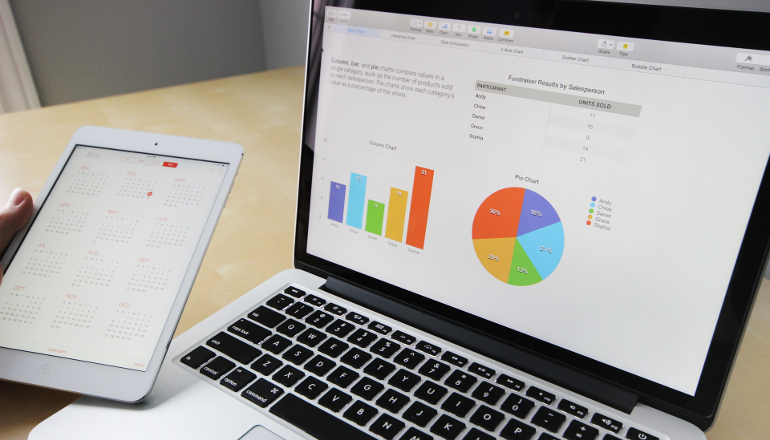
In case you have additional time for work during the day, you now know how to utilize it. Allocate specific blocks of time and work without distractions during them. Repeat the work/break pattern as long as it is necessary.
During the evening, when you will be mentally tired, try to inject some light physical exercise in your working mode. This will refresh your mind and allow you to come back with enhanced focus.
For example, work straight for 1.5 hour and then have a break for 30 minutes where you do some walking around the block.
In general, I have empirically found that you can have around 6 hours of “pure work” before you get really tired, especially if the majority of that work is creative (e.g. writing, programming etc.).
If you want to push it even further after that, try to shorten the work/break cycles. For example, work in half Pomodoros (12.5 mins) and have a 2-5 mins break after each one of those.
Finish your day by strategically planning the day after. As we mentioned, you should have already planned your First and Second tasks from the day before. Take 5 mins before you go to bed to predetermine those and get your PC ready for them if necessary.
Working in undistracted blocks of time
We mentioned this a lot of times so far, but let’s analyze how this really works.
When working, all potential distractions should be eliminated, or at least minimized. This relates to the “flow” state we mentioned earlier. Our attention is limited so we can only focus on one thing at a time. If some external element grabs our attention, then we need to perform a “context switch” and our productivity drops. Even worse, it might take some time until we get again into “flow”.
For this reason, we should set up our environment in a way that distractions are minimized. Let’s see how this can be accomplished.
First let’s focus on the items that are under our control. A lot of times, when we are working we are tempted to switch off to “time sink” sites. For example, we log into Facebook, to see what silly pictures are “friends” have shared. This is very tempting when Facebook is just a tab away.
To avoid this, we have to raise what is called the “Activation Cost”. This relates to how hard and labor intensive it is to perform a specific activity. For example, if Facebook is two clicks away, then its activation cost is very low.
In order to raise the activation cost while working on our computer, we can use browser plugins to block access to “black hole” sites like facebook or youtube. These plugins block the sites you have configured for a defined amount of time.
In order to have access again, you can either wait or go to your browser settings, disable the plugin and restart the browser. The activation cost is much higher this way.
Here are some great plugins that accomplish this:
After taking care of the items we directly control, let’s see how to approach external distractions. Those are mainly caused by other people who want to give them our attention, usually for a matter of their own agenda. We need to avoid this, or at least make it more difficult for them.
The first step is to eliminate distractions that might be caused by your phone. For your mobile, the solution is very simple: just put it in “Do Not Disturb” mode and you are done. For a fixed line phone, switch it to answer machine mode. If that is not possible, minimize the ringing volume. If that is also not possible, take it off the plug. Seriously, the world will not end for a few minutes.
Next, we need to remove “in person” distractions. If you are working from home, close your office’s or room’s door and hang a sign that reads “Do not Disturb” (or “Masterpiece Creation”). You have to “train” your family members to not disturb your when you are in work mode unless there is an extreme emergency (like a fire or something).
If you are at work or at a commonly used office space, things get a bit trickier. You will have to gradually “train” your colleagues that you should not be interrupted during specific periods. This can be a bit tricky, so make sure you do this smoothly and with tact.
If possible, have something that signals that your are in DnD mode. For example, wear headphones and let your peers know that when you have them on, they should not disturb you.
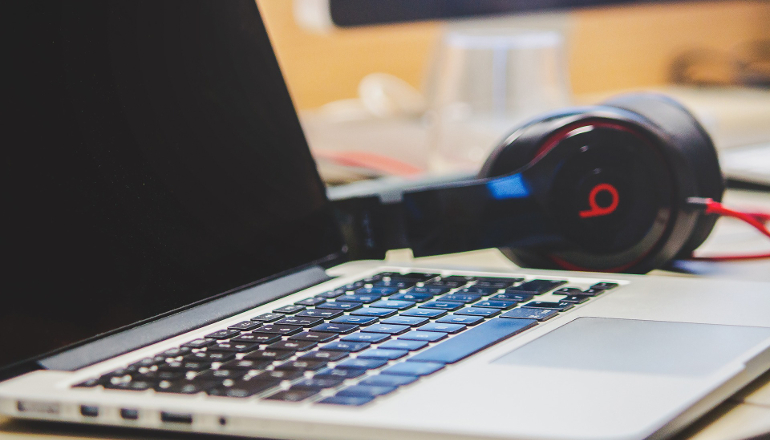
Timothy Ferriss has some excellent tips on this in his book, “The Four Hour Workweek”. He elaborates on how to deal with time wasters and time consumers. He even provides advice on how to avoid meetings! Make sure to check them out.
The bottom line here is that you should do everything in order to avoid distractions. They are the ultimate productivity killer. Just by doing this you will be ahead of most people in terms of productivity.
How I applied this technique while I was working a day job
So a good question now is how to apply all these concepts, especially when you have a day job. It might seem convenient to dismiss this approach and predetermine that it will not work, but that would be an excuse really, wouldn’t it?
I will explain how I did when I was at a day job during my early days of wealth building.
Some details first, in order to understand the context I was operating in. Of course you will have to adapt this to your situation.
For the company I worked, we had to be at office at 9o clock in the morning. My house was about 20 mins away by car.
The concept was to perform my morning ritual before leaving for work, finishing the first task during that period, and then to sneak in the second task while at office.
As you might understand, some sacrifices were expected. Building wealth is hard.
So, based on that, my plan was the following:
6:30AM: Wake up. That was hard to say the least, considering that I worked until late hours and my usual bed time was 1 hour after midnight. This allowed for only 5-6 hours of sleep per night (during the weekdays) which is not very sustainable in the long run. You will have to balance this with more sleep hours during the weekend and allocated slots of recovery time (e.g. take 1 Sunday off per month where you will do nothing and only chill).
6:30-7:15AM: Completed the “self strengthening” phase. I allocated around 45 minutes to get prepared for the day. I went to toilet and immediately returned for a meditation session. After that I made my bed and then had a quick workout for about 10 minutes. I mainly did push-ups, squats and some chin-ups to get my blood running. I then hit the shower and washed with cold water. Only then I was ready to get started working.
7:15AM -8:00AM: First task of the day. This was already predetermined. I did not expend mental power to decide on the spot what to do, but I had strategically planned it from the night before. Additionally, I had my computer prepared for the particular task. For example, if it was some research I had to do, I would have the relevant sites loaded on my browser. So when I opened my laptop’s lid, these tabs were there waiting for me. I did not lose time fumbling around on what to do.
8:00-8:30AM: Prepare and eat breakfast. I ate the same breakfast every day: Hard-boiled eggs, cottage cheese and some rusks. We are aiming for consistency and efficiency here, not variety. Don’t burden yourself with pointless decisions like what to eat. Keep it simple.
8:30-8:40AM: Get dressed for office.
8:40AM: Leave for work.
9:00-9:15AM: Get to work, prepare coffee, settle down and get ready for action.
9:15-10:00AM: Second task of the day. Again, this was planned from the day before.
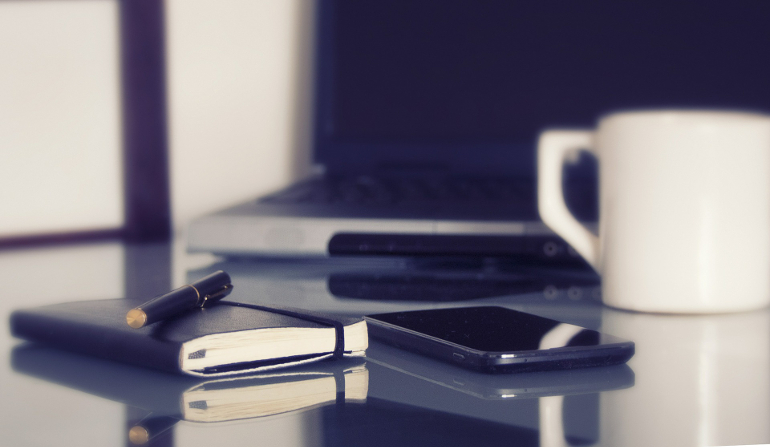
So, at 10 o’clock in the morning, I already had 1.5 hour of productive work done. At the same time, other people were still fumbling around, and the most productive thing they had “accomplished” was probably to check their e-mail.
More importantly, the most critical work had been performed. Even if the rest of the day went to hell and I did not have the chance to work on my projects again, it would not matter that much because I would have already accomplished what should have been accomplished.
Again, this was not an easy feat. It required a great amount of self-discipline, but as I said, some sacrifices will be required. The trick is to make it a habit so it requires as less willpower as possible.
Conclusion
Being productive is not exactly rocket science. Yet most people never manage to work in a productive and effective manner.
By making a few adjustments to your daily workflow, you can reach new level of productivity.
Here are the important things to remember.
- Optimize your sleep pattern so that you wake up early
- Create an empowering morning ritual
- Eliminate distractions by raising the activation cost
- Allocate specific blocks of time for each task
- Work in one and only task each time
- Focus on the task at hand so that you get into “flow” state
- After each task, have a short break to recover
- Add physical exercise whenever you feel mentally tired
These might seem a bit burdensome, so here is a tip:
Focus on small steps and progress, not perfection.
Don’t try to do everything at once. Build a core routine and then start adding elements to it.
It might take you a few weeks until you have completely nailed it down, but after that, you will see your productivity soaring.
So, there you have it. A daily ritual to allow you to accomplish more in a day than other people do in a week.

